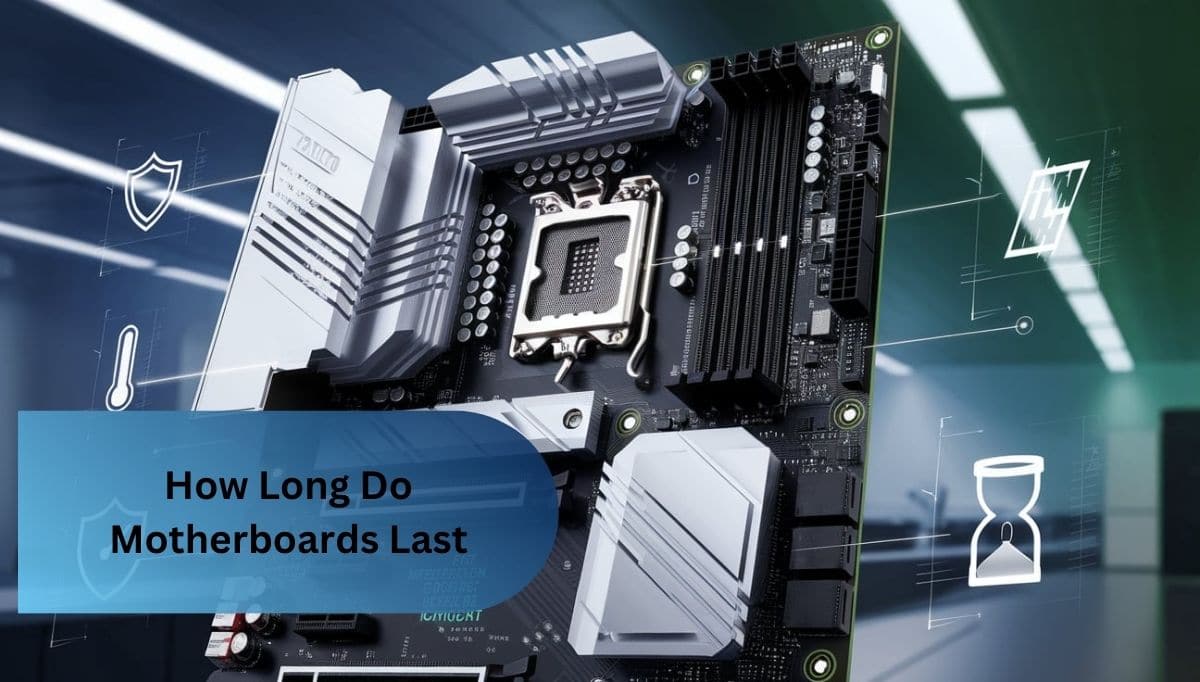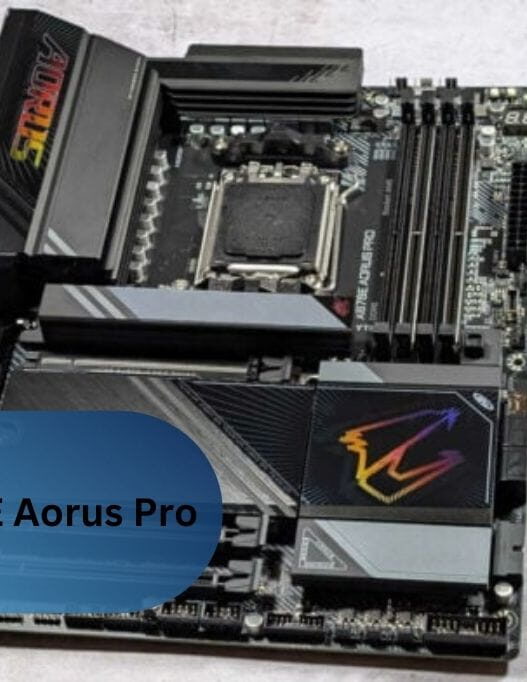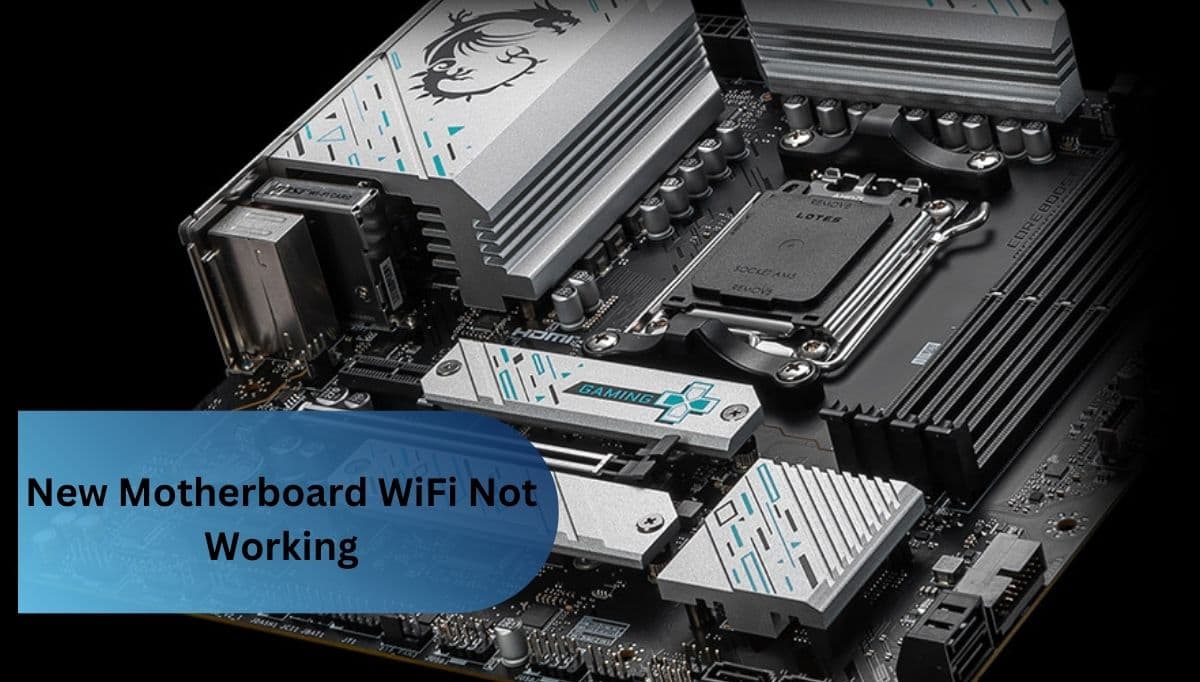Most motherboards last about 5 to 10 years, depending on how well they’re made and how you use them. High-quality ones can last even longer if you take good care of them. Things like overheating, dust, and power surges can wear them out faster, but regular cleaning and a stable power supply can help them last.
In this article, we will talk about how long motherboards last, the factors that affect their lifespan, and tips to help extend their life. We’ll also explore signs of motherboard failure and how to maintain your system for better performance.
How Long Does A Motherboard Last?
A motherboard usually lasts between 10 to 15 years, but how long it lasts can depend on a few things. Let’s break it down:
1. How You Use It:
If you’re using the motherboard for heavy tasks like gaming, video editing, or running big software, it may wear out faster. On the other hand, if you’re just using it for things like web browsing or word processing, it might last longer. Overclocking or pushing the motherboard too hard can also shorten its life.
2. The Environment:
The temperature and humidity around the motherboard can make a big difference. If your computer is running in a super hot or dusty area, that can cause the motherboard to wear out quicker. Keeping your system cool and well-ventilated can help it last longer.
3. Quality of the Parts:
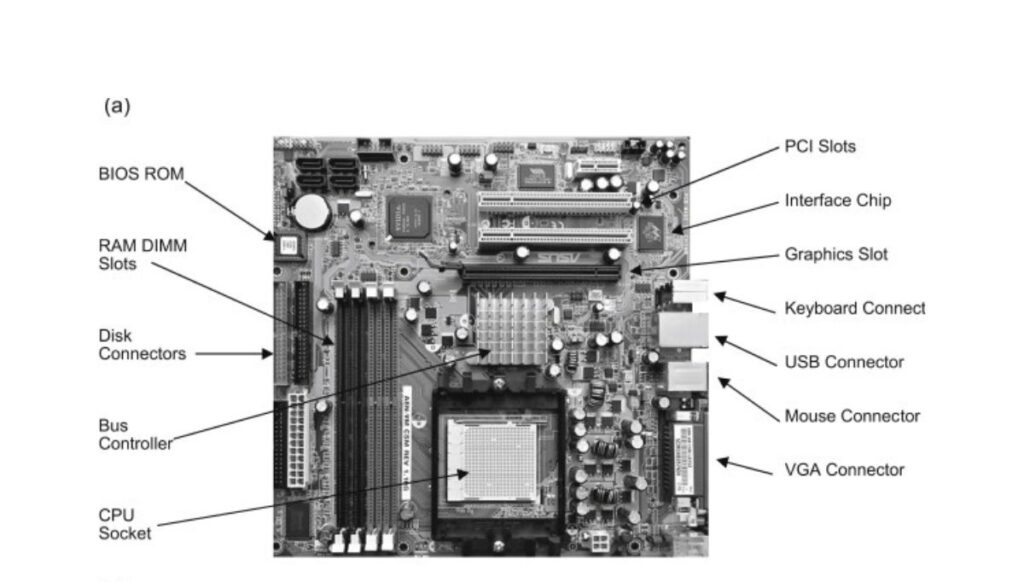
Motherboards are made with different quality parts. High-quality materials, like good capacitors, tend to last longer and handle stress better than cheaper ones. So, investing in a good motherboard can make a big difference in how long it lasts.
4. Technology Changes:
Even if your motherboard is still working fine, it might become outdated. As new tech comes out, motherboards that are a few years old may not support the latest processors, memory, or other components. That can make it harder to keep up with new tech, even though the motherboard itself still works.
What Factors Affect The Lifespan Of A Motherboard?
A motherboard’s lifespan depends on a few key factors:
- How You Use It: If you’re using your motherboard for heavy tasks like gaming or video editing, or if you overclock it, it can wear out faster. These activities put a lot of strain on the motherboard.
- The Environment: Things like heat, poor cooling, humidity, dust, and pollutants can damage your motherboard. Keeping your system cool and in a clean, dry space can help it last longer.
- Quality of the Parts: High-quality parts, like capacitors, last longer than cheaper ones. So, motherboards made with better components tend to last more years.
- Tech Changes: As new tech comes out, older motherboards might not support the latest components or software, making them outdated even if they’re still working.
Read Also: Is Asrock A Good Motherboard – Lets Explore What It Is!
How Often Do You Need To Replace Your Motherboard?
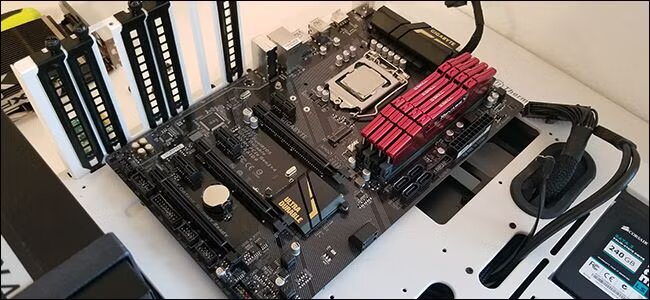
How often you need to replace your motherboard depends on a few things, like how fast technology changes, how your system is performing, and how the motherboard holds up over time. Generally, most people can use a motherboard for 7 to 10 years before it needs replacing, but here’s what affects that:
1. Tech Changes:
As new hardware comes out, older motherboards might not work with the latest processors, memory, or storage. If your motherboard can’t keep up with new tech, it might be time to replace it, especially if you can’t upgrade your system anymore.
2. Performance Issues:
If your motherboard starts causing problems like crashes or freezes, or if it can’t handle important components, it might need replacing sooner. This is especially true for systems used for things like gaming or video editing, where performance matters a lot.
3. Component Failures:
Over time, parts on the motherboard, like capacitors, can wear out due to heat or stress. If these parts fail, the motherboard might stop working properly, and you’ll need to replace it.
4. Upgrades and Compatibility:
If you’re upgrading other parts of your system, like your CPU or RAM, your old motherboard might not support the new tech. In this case, replacing the motherboard will ensure everything works together.
Do Motherboards Go Bad Over Time?
Yes, motherboards can go bad over time, even though they are made to last for several years under normal use. How long a motherboard lasts depends on things like the quality of its parts, how it’s used, and the environment it’s in. Here are some reasons why motherboards might slowly degrade:
1. Component Degradation:
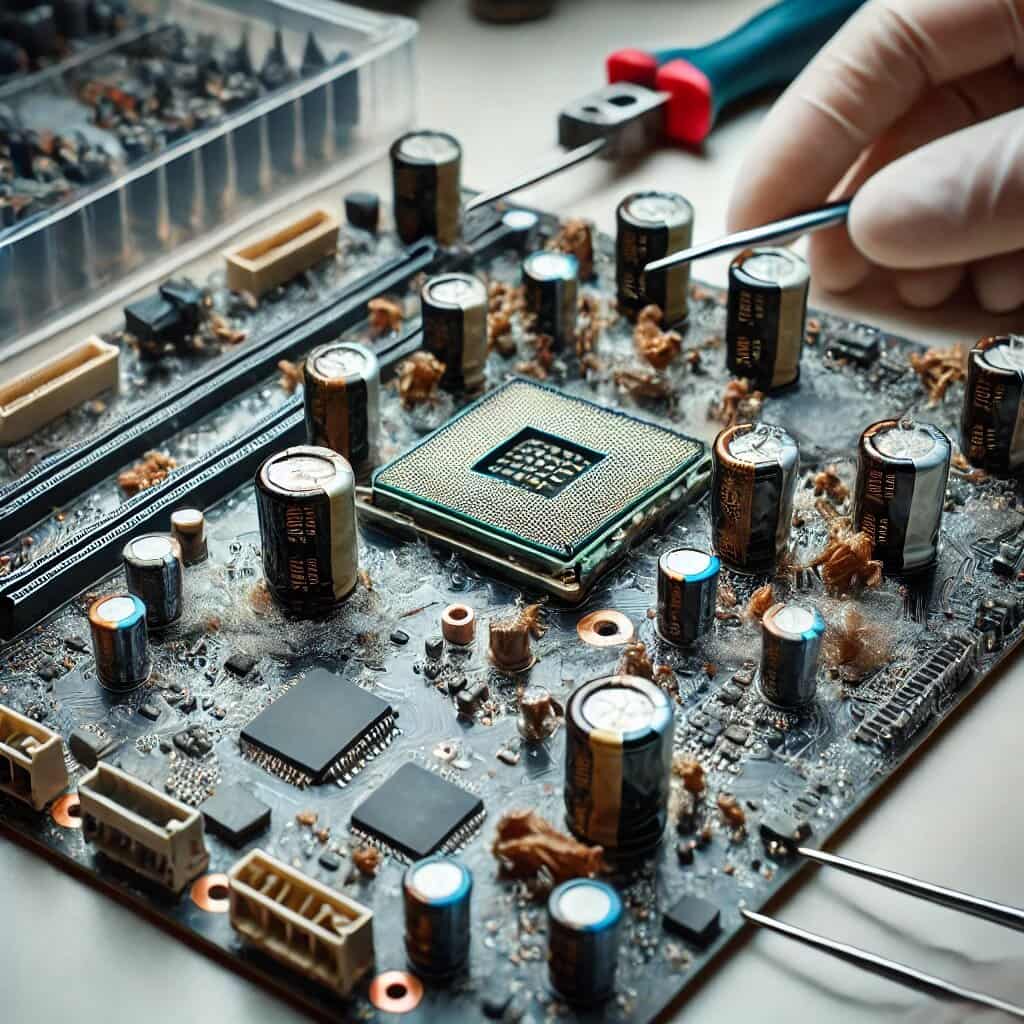
The parts on a motherboard, like capacitors, resistors, and circuits, can wear out as they age. Over time, heat and electrical stress can cause these parts to break down, which might lead to failure. For example, capacitors are sensitive to heat, and as they get older, they can cause your system to become unstable or stop working.
2. Heat and Environmental Stress:
Too much heat, whether from bad cooling or external factors, can damage the motherboard. If it overheats, it can mess up the motherboard’s circuits or solder joints, which could eventually cause problems. Environmental factors like humidity, dust, or chemicals can also cause rust or short circuits, speeding up the decline of the motherboard.
3. Technological Obsolescence:
Even if the motherboard still works, new tech can make it outdated. As processors, memory, and other parts get better, older motherboards might not support them, making upgrades or expansions impossible. So, while the motherboard might still work, it could become less useful as technology moves forward.
4. Mechanical Stress and Usage:
Physical damage, like dropping or improper installation, can harm the motherboard. If the system is used for heavy tasks like gaming or video editing, that constant use can wear it out faster. Overclocking, which makes the motherboard work harder, can also generate more heat and wear it down quicker.
How Do I Know If My Motherboard Is Going Bad?
It can be tough to tell if your motherboard is failing because its problems can show up slowly and might look like issues with other parts of your computer. But here are some clear signs that it could be going bad:
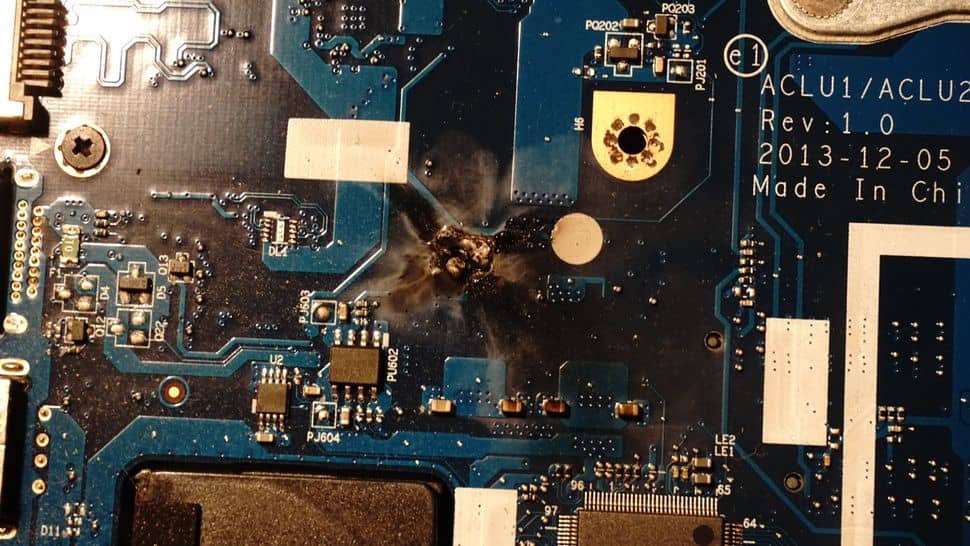
- System Crashes or Freezes: If your computer keeps freezing or crashing, especially when you’re doing demanding tasks, it could be a sign that the motherboard is having trouble. If this happens often, even across different software or operating systems, the motherboard could be the problem.
- Won’t Boot: If your computer doesn’t start up properly or shows a blank screen, it could mean the motherboard is failing. You might also hear beeping sounds or see the system power on without getting to the operating system.
- Power Problems: If your computer keeps shutting off randomly or won’t turn on at all, it could be a sign that the motherboard is messing up the power supply. This might also cause weird issues like flickering screens or random restarts.
- Problems with Devices: The motherboard helps connect your computer’s parts, like the CPU, memory, and devices like USB drives. If your devices keep disconnecting or don’t work at all, it could mean the motherboard’s circuits are failing.
- Visible Damage: If you open up your computer and notice any visible damage like burnt spots, broken capacitors, or rust, it’s a sign that something’s wrong with the motherboard. This damage can happen because of overheating or electrical problems.
- Doesn’t Recognize New Parts: If your motherboard doesn’t recognize new parts you try to add, like a new RAM stick or hard drive, it could be a sign that the motherboard’s circuits aren’t working properly anymore.
- Overheating: If your motherboard is overheating even with good cooling, that could mean it’s wearing out inside. Heat damage can cause problems with the motherboard’s circuits, leading to instability and eventual failure.
Read Also: Are Msi Motherboards Good – Upgrade With Confidence!
Tips to Help Your Motherboard Last Longer
To make your motherboard last longer, you can follow a few simple tips:

- Keep It Cool: Overheating can damage your motherboard, so make sure your system has good airflow. Clean the fans and heatsinks regularly to avoid dust buildup that can block cooling.
- Use Surge Protection: Power surges can harm your motherboard. A surge protector or UPS (Uninterruptible Power Supply) can help protect it from power spikes.
- Control The Environment: Keep your system in a clean, dry area. Humidity, dust, or chemicals can cause corrosion and damage the motherboard.
- Avoid Overclocking: Overclocking can increase performance but also puts extra strain on the motherboard. If you want it to last longer, avoid overclocking or use it carefully.
- Use A Good Power Supply: Make sure your power supply unit (PSU) has enough wattage for your system. A weak PSU can cause instability and damage the motherboard.
- Handle Carefully: Be gentle when installing or moving the motherboard. Always ground yourself to avoid static electricity, which can damage it.
- Update Bios And Drivers: Keep the motherboard’s BIOS and drivers up to date. This ensures everything runs smoothly and avoids compatibility issues.
- Check And Clean Regularly: Inspect your motherboard for any visible damage, like bulging capacitors. Clean out dust and debris to keep everything running smoothly.
Comparison: Motherboard Lifespan Vs. Other Components
The motherboard usually lasts longer than most other computer parts, but its life depends on how it’s used and what tech comes out over time. Here’s how it compares to other important components:
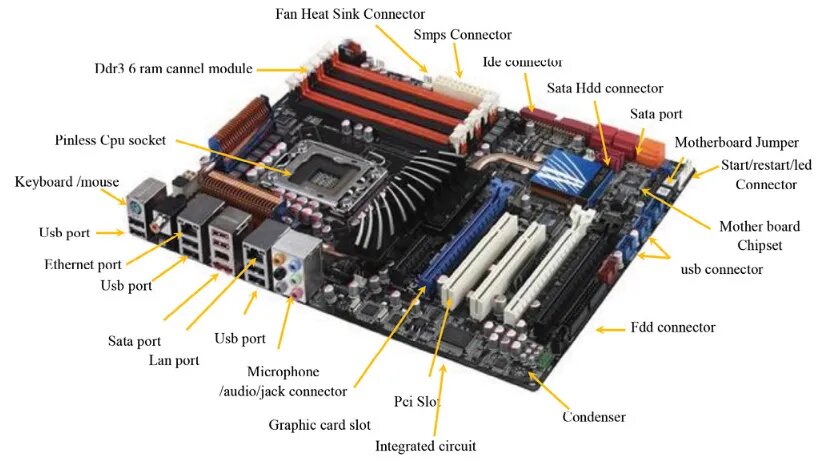
- Motherboard vs. CPU: Motherboards tend to last longer than CPUs, which can still work for many years but may need upgrading as new tech comes out. A CPU will usually only fail due to extreme heat or electrical problems, while motherboards can wear out over time because of heat and electrical stress.
- Motherboard vs. RAM: RAM often lasts longer than motherboards, with chips lasting around 10 years or more. But as new types of RAM are introduced, older motherboards may not support them, which means you might need a new motherboard to upgrade your memory.
- Motherboard vs. Storage (HDD/SSD): Storage devices like HDDs and SSDs don’t last as long as motherboards. HDDs last about 3-5 years, while SSDs can last 5-10 years, depending on how much you use them. Motherboards might degrade from heat or other environmental factors but generally outlast storage devices.
- Motherboard vs. PSU: Power supply units (PSUs) usually last 5-10 years but can fail earlier due to power surges or age. If the PSU fails, it can cause power issues or instability, often before the motherboard shows signs of trouble.
- Tech Changes: While motherboards last longer, they can become outdated as new tech, like faster CPUs and memory, require newer interfaces. This makes upgrading harder, even if the motherboard still works fine.
FAQ’s
1. What Is The Average Lifespan Of A Motherboard?
The average lifespan of a motherboard is usually between 10 to 15 years. It depends on how well it’s made, how you use it, and the environment it’s in. Taking care of it can help it last longer.
2. How Do I Check If My Motherboard Is Failing?
To check if your motherboard is failing, look for signs like your computer crashing often, not starting up, shutting down randomly, or problems with connected devices. You can also use diagnostic tools to help spot issues with the motherboard.
3. Can Cleaning Improve A Motherboard’s Lifespan?
Yes, cleaning your motherboard regularly can help it last longer. It prevents dust from building up, which can cause overheating and slow down its performance. Keeping it clean ensures better airflow and reduces the risk of damage.
4. What Shortens A Motherboard’s Lifespan?
Things that can shorten a motherboard’s lifespan include too much heat, bad cooling, power surges, and exposure to dust or humidity. Overclocking and physical damage can also speed up wear and tear on the motherboard.
5. How To Extend The Life Of Your Motherboard?
To help your motherboard last longer, make sure it stays cool, use a stable power supply, clean out any dust, and avoid overclocking. Keeping it safe from extreme heat or humidity will also help it stay in good shape.
6. Do Motherboards Go Bad Over Time Even With No Use?
Yes, motherboards can still go bad over time even if they’re not being used. Components like capacitors can age, and things like humidity or temperature changes can cause issues like rust or corrosion.
7. How Long Does A Laptop Motherboard Last Compared To A Desktop Motherboard?
Laptop motherboards usually last about the same time as desktop ones, around 5 to 10 years. However, they might wear out quicker because they’re smaller and get hotter. Plus, laptops don’t get upgraded as much, which can make them outdated sooner.
8. What Should I Do If My Motherboard Battery Dies?
If your motherboard battery dies, you should replace it with a compatible coin cell battery to keep things running smoothly, especially for saving your BIOS settings. If you don’t replace it, you might lose your settings or face system errors.
Summery:
Motherboards usually last around 5 to 10 years, but their lifespan can be affected by how they’re used and the environment they’re in. Overheating, dust, and power surges can speed up wear and tear, but taking steps like cleaning, using surge protection, and keeping your system cool can help extend their life. While motherboards might still work after many years, they can become outdated as new tech comes out, making them less compatible with newer components. Regular maintenance and proper care are key to getting the most out of your motherboard.
Read More:








